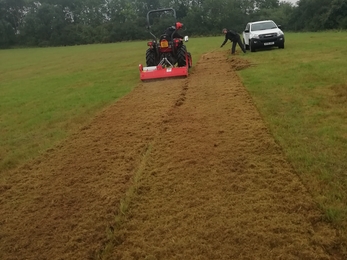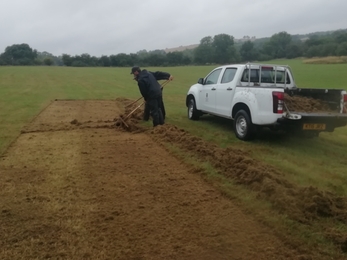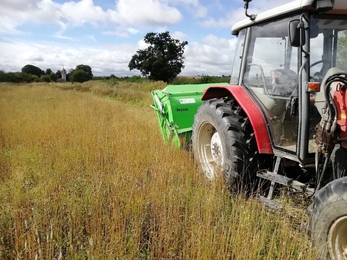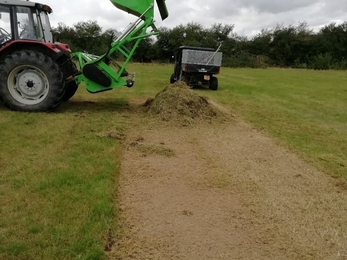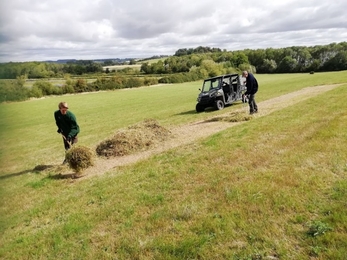At Rutland Water Nature Reserve, red and yellow clover rattle along the bottom half of one of our meadows. Unfortunately, the top half does not mirror the beauty of the clover and has very little floristic interest... So we thought we would try to change this!
Harvesting green hay from a donor meadow and strewing or spreading it onto a recipient meadow is a tried and tested method that has been used to increase floral diversity within grasslands and meadows, it is cost effective and guarantees the source of your seed.
Ground preparation was very important to succeed in our task! Our Trainee Reserve Officers Ben and Jonny used a flail mower on its lowest setting to remove as much vegetation as possible from three 20m by 2m strips at random intervals within the meadow.


